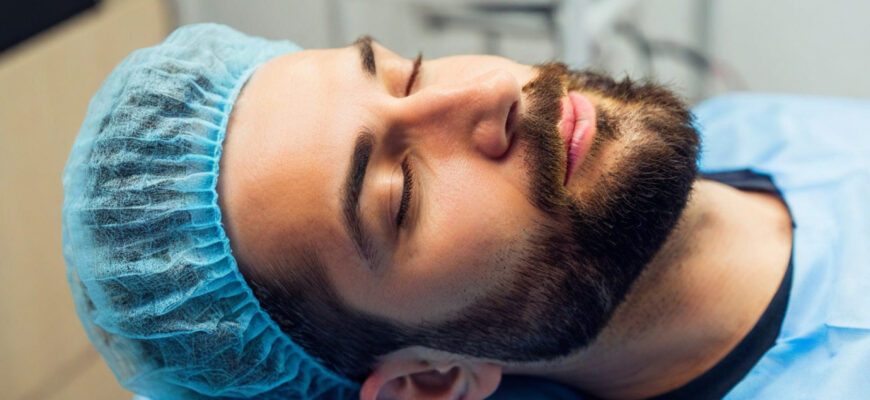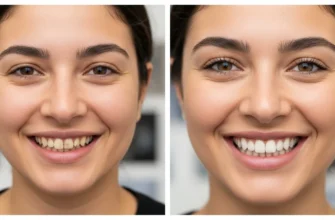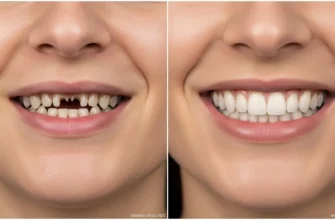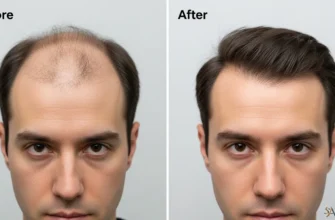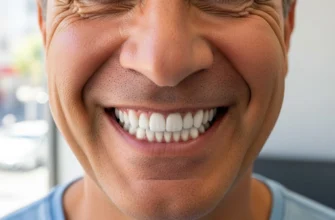4000 Grafts Hair Transplant in Turkey: Comprehensive Cost Analysis and Guide 2025
Turkey has established itself as a global leader in hair transplantation, offering high-quality procedures at significantly lower costs compared to Western countries. This comprehensive analysis examines the current landscape of hair transplants in Turkey with a specific focus on 4000-graft procedures, covering costs, coverage expectations, procedure duration, and comparing options across different clinics. The research reveals that while prices for 4000-graft procedures in Turkey typically range from €1,500 to €4,500, this represents a substantial saving compared to Western prices of €6,000-€14,000 for equivalent procedures, all while maintaining comparable quality standards in top-tier clinics.
Cost Analysis of 4000 Grafts Hair Transplant in Turkey
Current Pricing Landscape (2025)
The cost of a 4000 grafts hair transplant in Turkey varies based on several factors including clinic reputation, surgeon experience, technique employed, and package inclusions. Based on current market analysis, the price range for 4000 grafts in Turkey typically falls between €1,500 and €4,500. This pricing structure represents a significant advantage compared to other European countries where the same procedure would cost substantially more.
Individual clinics may offer different pricing models, with some charging per graft while others provide all-inclusive packages regardless of graft count. The per-graft pricing model in Turkey typically ranges between $1 and $3 per graft, making a 4000-graft procedure cost approximately $4,000-$12,000 when calculated on a per-graft basis. However, all-inclusive packages often provide better value and more predictable final costs.
Comparative Cost Analysis
When comparing hair transplant costs internationally, Turkey’s competitive advantage becomes immediately apparent. The same 4000-graft procedure that costs €1,500-€4,500 in Turkey would cost approximately:
- €5,700 in Germany
- €6,500 in the United Kingdom
- €5,950 in Spain
- €5,300 in Poland
In the United States, costs are even higher, typically ranging from $11,400 to $15,900 for comparable procedures. This substantial price difference explains why approximately 1,000,000 men from around the world choose Turkey for their hair transplant procedures.
What’s Included in the Price
Most reputable Turkish clinics offer all-inclusive packages that typically cover:
- Initial consultation and planning
- The complete hair transplant operation
- Medical staff fees
- Local anesthesia
- Post-operative medications
- Follow-up consultations
- Aftercare products and instructions
Many packages also include additional benefits such as:
- Hotel accommodation (typically 2-3 nights)
- Ground transportation between airport, hotel, and clinic
- Translation services during your stay
- Post-operative washing sessions
It’s worth noting that flight tickets are usually not included in most hair transplant packages, though some premium clinics might offer partial flight reimbursement as part of special promotions.
Coverage and Results with 4000 Grafts
How Much Area Can 4000 Grafts Cover?
A 4000-graft hair transplant provides significant coverage suitable for addressing moderate to severe hair loss. This quantity is generally sufficient to restore the frontal hairline and provide substantial coverage to the mid-scalp area. For context, 4000 grafts typically equates to approximately 10,000 individual hair strands, as each graft contains 2-3 hairs on average.
Coverage capacity depends on several factors including:
- The patient’s degree of hair loss (Norwood scale rating)
- Hair characteristics (thickness, color, curl)
- Desired density of the transplanted area
- Distribution requirements across different scalp zones
For patients with extensive baldness including the crown area, 4000 grafts may cover the frontal and mid-scalp regions effectively, but might not provide complete coverage for the crown. Some patients with advanced hair loss may require a second procedure to address the crown area after the initial transplant has healed.
Expected Results Timeline
Hair transplant results develop gradually following this typical timeline:
- 1-2 weeks: Initial healing with visible scabs
- 2-4 weeks: Transplanted hair begins to shed (known as “shock loss”)
- 3-4 months: New hair begins to grow from the transplanted follicles
- 6-9 months: Noticeable improvement in density and coverage
- 12-18 months: Final results with full density and natural appearance
Patients should maintain realistic expectations regarding the development timeline, understanding that the full results of a hair transplant are not immediately visible and require patience.
Procedure Duration and Logistics
How Long Does a 4000 Grafts Hair Transplant Take?
The duration of a 4000 grafts hair transplant procedure varies based on the technique used and the clinic’s protocols. According to expert sources:
- At experienced clinics in Turkey, a 4000 graft hair transplant typically takes between 6 to 8 hours
- Some clinics report longer durations of 8 to 10 hours for the same procedure
- The longer duration procedures usually include breaks for patient comfort
The total procedure time can be broken down into three main phases:
-
Extraction phase: Harvesting 4000 grafts from the donor area
-
Preparation phase: Sorting and preparing the extracted grafts
-
Implantation phase: Placing the grafts into the recipient area
Each of these phases requires meticulous attention to detail, explaining the significant time investment required for a quality result.
One Session vs. Multiple Sessions
There is considerable debate regarding whether 4000 grafts should be transplanted in a single session or divided across multiple sessions. The research provides mixed perspectives:
Multiple Reddit users report successfully undergoing single-session transplants of 4000-4800 grafts with good results and no complications. One user mentioned: “I had 4800 grafts in a single session. No issues. Just be prepared for those initial anaesthesia injections.”
However, medical research suggests potential concerns with large single-session transplants:
- A 2024 study indicated a correlation between extracting more than 4000 grafts in a session and potential complications, particularly when surgery extends to a second day
- Another study identified higher graft counts (>4000) as a risk factor for post-operative folliculitis
Many reputable clinics limit single-day procedures to around 3500-4000 grafts, recommending patients with more extensive needs to schedule subsequent procedures after adequate healing. This approach may optimize graft survival rates and reduce complications.
Comparing Hair Transplant Options in Turkey
Top-Rated Clinics in Turkey
Based on patient reviews and expert evaluations, several Turkish clinics consistently receive high ratings for their quality of care and results. According to a community ranking shared on Reddit, the following tiers were identified:
S Tier (Highest Quality):
- Pekiner
- Keser (noted that Pekiner trained under Keser)
A Tier (Excellent Quality):
- HLC (Hair Loss Clinic)
B Tier (Very Good Quality):
- Bicer (noted as expensive relative to results)
- Bek (former HLC doctor with promising early results)
C Tier (Good Quality):
- Turan (described as “good value at his price”)
D Tier (Acceptable Quality):
- Gur (some concerns about hairline designs and daily graft counts)
This tiering system provides prospective patients with a framework for evaluating clinics, though individual research and consultation remains essential.
Package Comparison Across Price Points
Turkish hair transplant packages vary significantly across price points, with different inclusions and quality standards:
Budget Packages (€1,300-€2,000):
- Basic accommodations (3-star hotels)
- Standard FUE technique
- Limited post-operative care
- Variable surgeon involvement (may be primarily technician-performed)
Mid-Range Packages (€2,000-€3,000):
- Better accommodations (4-star hotels)
- Advanced techniques like Sapphire FUE
- Comprehensive aftercare
- Greater surgeon involvement in critical phases
Premium Packages (€3,000-€4,500):
- Luxury accommodations (5-star hotels)
- Advanced techniques (DHI, Sapphire FUE, Manual FUE)
- Extensive aftercare program
- Direct surgeon involvement throughout the procedure
- Private clinic settings rather than hair mills
One Reddit user shared their experience: “I paid around €2000 all in at MCAN in Istanbul. I did heavy research into clinics before choosing. And they did an AMAZING job. This was in 2020 and 2021.”
Key Considerations Beyond Price
Evaluating Clinic Quality and Legitimacy
While cost is an important factor, prospective patients should consider several additional aspects when selecting a clinic:
Doctor Credentials and Involvement:
- Verify the surgeon’s credentials, experience, and specialization in hair transplantation
- Confirm whether the surgeon performs critical aspects of the procedure or delegates to technicians
- Research whether the surgeon has published research or contributes to the field
Facility Standards:
- Medical hospital vs. commercial office setting
- Accreditation status
- Adherence to international medical standards
- Sterilization protocols
Previous Patient Results:
- Examine before/after photos of previous patients
- Look for patients with similar hair characteristics and loss patterns
- Verify authenticity of photos (some clinics use stock images)
Red Flags to Watch For:
- Extremely low prices (below €1,500 for 4000 grafts)
- Promises of unrealistic results
- High-pressure sales tactics
- Lack of medical assessment before quoting graft numbers
- Unwillingness to provide direct contact with the surgeon
Understanding Procedure Risks
Like any surgical procedure, hair transplantation carries certain risks that patients should be aware of:
Common Complications:
- Temporary swelling and discomfort
- Scabbing and crusting in the recipient area
- Temporary “shock loss” of transplanted hair
- Infection (rare when proper protocols are followed)
Specific Risks with Large Graft Counts:
- Recent research indicates that transplanting more than 4000 grafts in a single session, particularly across two days, may increase the risk of complications like acute donor site effluvium (ADE)
- Higher risk of post-operative folliculitis with graft counts exceeding 4000
- Potential for lower graft survival rates when too many grafts are processed in a limited timeframe
One study specifically noted: “Out of 30 cases of ADE, total grafts extracted exceeded 4000 in 28(93.3%) of cases; only 2(6.7%) of the cases had a graft extraction of <4000. There was a significant and direct relationship between high graft extraction and ADE.”
Comparative Analysis: Turkey vs. USA Hair Transplant Market
Cost Differential Analysis
The cost difference between Turkish and American hair transplant procedures is substantial and represents one of the primary factors driving medical tourism to Turkey:
| Procedure Type | Average Cost in Turkey | Average Cost in USA | Cost Difference | Savings Percentage |
|---|---|---|---|---|
| Basic FUE (4000 grafts) | €1,999 – €3,290 | $11,400 – $15,900 | $8,000 – $13,000 | 70-80% |
| DHI (4000 grafts) | €3,290 – €4,830 | $13,800 – $15,500 | $9,000 – $11,000 | 65-75% |
| Sapphire FUE (4000 grafts) | €2,390 – €3,290 | $13,900 – $15,900 | $10,000 – $13,000 | 72-82% |
Factors Contributing to Lower Costs in Turkey
Several factors contribute to the substantially lower costs for hair transplantation in Turkey:
- Economic Factors: Turkey’s economy and lower cost of living result in lower operational costs and salaries for medical professionals
- Market Competition: The high concentration of hair transplant clinics in Turkey creates intense competition, driving prices down
- Government Support: The Turkish government actively supports medical tourism through incentives and infrastructure development
- Volume Efficiency: Many Turkish clinics perform a high volume of procedures, allowing for economies of scale and more efficient operations
- Package Approach: The all-inclusive package model eliminates separate billing for facility fees, anesthesia, and other components that drive up costs in the US healthcare system
Despite these lower costs, the quality of care at top Turkish clinics remains comparable to international standards, particularly at facilities with international accreditation.
Planning Your Hair Transplant Journey to Turkey
Pre-Procedure Preparation
Proper preparation is essential for a successful hair transplant experience in Turkey:
Research and Selection (3-6 months before):
- Research multiple clinics based on reputation, reviews, and results
- Schedule virtual consultations with at least 3-5 clinics
- Request detailed information about the surgeon’s credentials and involvement
- Ask for before/after photos of previous patients with similar hair loss patterns
- Compare package details and understand exactly what’s included
Medical Assessment (1-3 months before):
- Share detailed medical history with your selected clinic
- Discuss any medications you’re taking and potential interactions
- Undergo any recommended pre-procedure testing
- Follow pre-procedure guidelines (avoiding blood thinners, alcohol, etc.)
Logistical Planning (1-2 months before):
- Book flights (plan to arrive at least one day before the procedure)
- Confirm accommodation details if not included in the package
- Arrange transportation plans within Turkey
- Prepare necessary documents (passport, visa if required, clinic documentation)
Final Preparation (1-2 weeks before):
- Follow clinic instructions regarding hair washing and cutting
- Pack essential items (button-up shirts, comfortable clothes, neck pillow)
- Arrange for time off work (typically 7-14 days for initial recovery)
Post-Procedure Care and Timeline
Proper aftercare is crucial for optimal results following a hair transplant:
Immediate Post-Procedure (Days 1-3):
- Follow the clinic’s washing instructions precisely
- Sleep with head elevated to minimize swelling
- Avoid direct sunlight, physical exertion, and swimming
- Take prescribed medications as directed
Early Recovery (Days 4-14):
- Begin gentle washing according to clinic guidelines
- Expect some scabbing and crusting that will gradually resolve
- Wear recommended headwear when outdoors
- Avoid alcohol and smoking
Intermediate Phase (Weeks 2-12):
- Resume normal activities gradually
- Understand that transplanted hair will shed (this is normal)
- Protect the scalp from sun exposure
- Follow scheduled follow-up consultations (virtual or in-person)
Long-Term Results Phase (Months 3-12):
- New hair growth begins around month 3-4
- Density continues to improve through month 12
- Final results typically visible between 12-18 months
- Continue follow-up assessments as recommended by your surgeon
Conclusion
Hair transplantation in Turkey represents an attractive option for individuals seeking quality hair restoration at affordable prices. The 4000-graft procedure, in particular, offers substantial coverage for moderate to severe hair loss at a fraction of the cost charged in Western countries. While prices typically range from €1,500 to €4,500, the quality varies significantly across clinics, making thorough research essential.
When considering a hair transplant in Turkey, prospective patients should look beyond price alone, evaluating surgeon credentials, facility standards, previous patient results, and comprehensive aftercare protocols. Although the cost savings are substantial, the investment still represents a significant commitment that warrants careful consideration of all factors.
For optimal results, patients should select clinics with proven track records, proper medical protocols, and transparent communication. By balancing cost considerations with quality standards, patients can achieve satisfactory and natural-looking results while benefiting from Turkey’s position as a global leader in hair transplantation.

